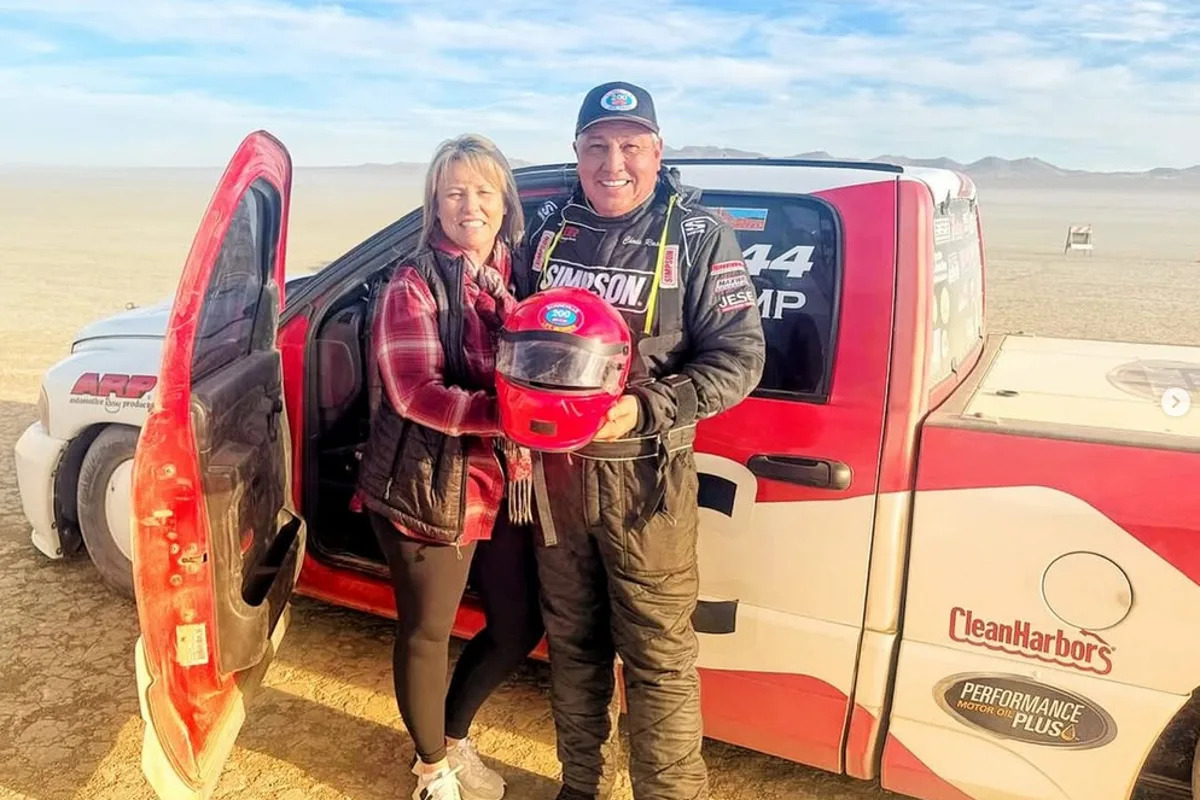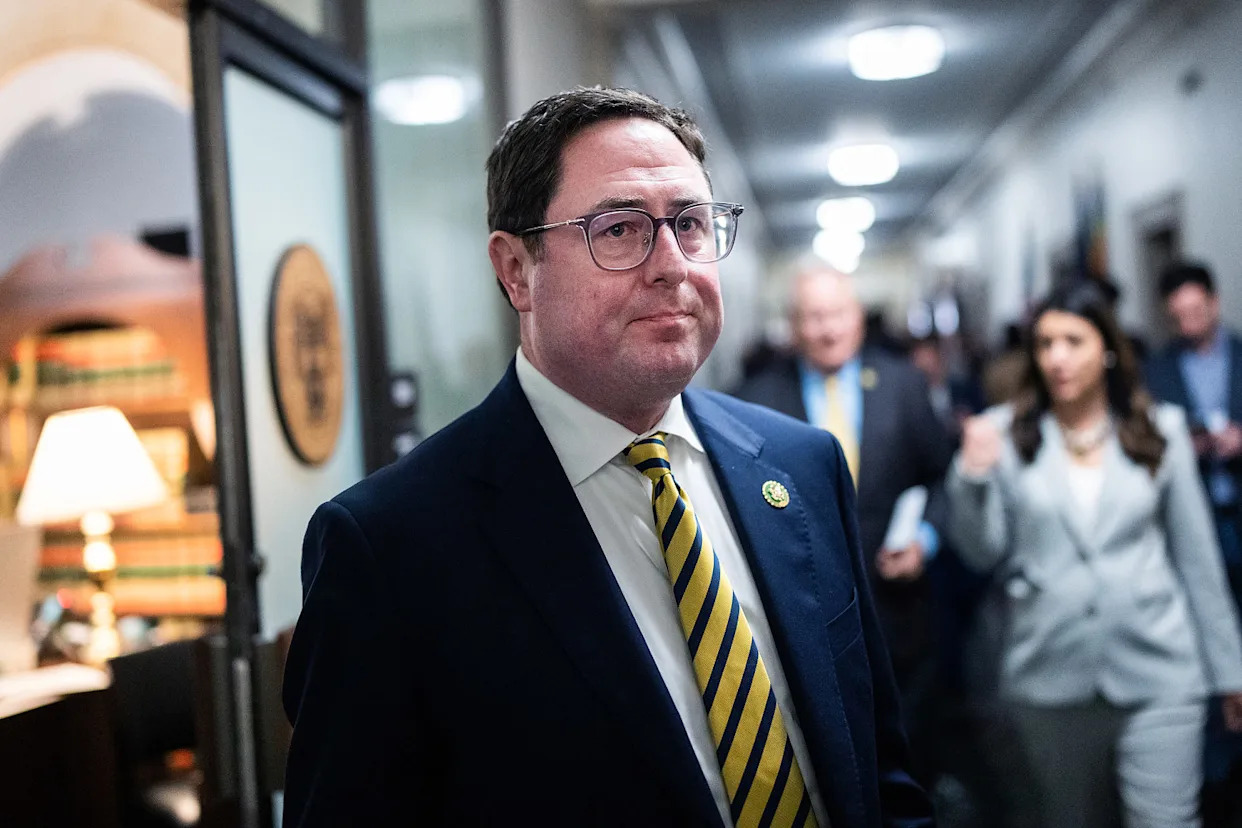
Much like the future of energy in the United States, Laura Nelson is dynamic and evolving. And she’s continuously seeking to find what technology works best.
She has quiet grace, but powerful knowledge, traits that have set her apart and helped her carve out a notable career.
On one hand, she has a doctorate in environmental economics, served as energy adviser for two Utah governors and is helping Utah chart a notable and innovative path to secure energy diversity for generations to come.
She is the regional engagement lead for the Idaho National Laboratory, located west of Idaho Falls. And she is the face of diplomatic discussions about what will serve states best in this rapidly evolving world on advanced nuclear technology and other energy developments.
On the other hand, she describes herself as a punk rocker through and through and jams to Devo and the Ramones. She once went on stage with a Ramones cover band and eagerly joined in their performance. She admits it was a blast — and she wasn’t too bad, either.
On the day of an interview for this story, Nelson is sporting orange and blue nails while admitting they are not her usual style. She prefers pastels. But the orange and blue colors are in honor of her father. He was a huge fan of the University of Florida’s sports teams, and one of his last wishes was that all family members wear Gators’ colors at his memorial service. That day she was preparing for a long overdue official goodbye in late July.
Of INL and tiny AJ
Tiny Arlo James is yapping at visitors at Nelson’s Cottonwood Heights condominium, before snuggling into her lap. She apologizes for the noise, and AJ, a King Charles terrier/poodle mix with silky red hair, eventually gets used to the strangers.
Nelson’s job is to educate, help people to become comfortable with new energy technologies and be patient with those who are not — not unlike what she is doing with a nervous AJ confronted with new people.
“I think the main part of what my job entails is bringing people together and emphasizing the partnerships and relationships that support the Idaho National Laboratory’s mission to change the world’s energy future and ensure we have a resilient energy infrastructure to support that system,” she said. “And we recognize we work in a region that has goals about how they want to achieve that. So how can we come together as partners and assure we have that secure energy future?”
She is confident about overcoming hurdles because she believes states are embracing a new vision.
Nelson does not work for an advocacy entity. She stressed that Idaho National Laboratory is about supporting technological development but not pushing policy. That is up to individual states, presidential administrations and other elected leaders, she says.

A new future
Nelson retired in 2020 as Gov. Gary Herbert’s energy adviser and director of his Office of Energy Development after more than 10 years of service in Utah state government.
At the time, Herbert had this to say about her:
“Dr. Nelson is truly an unparalleled leader. Her tireless dedication has proven critical in ensuring Utah’s energy and minerals economy continues to thrive in the face of a rapidly evolving landscape,” Herbert said.
“I have greatly appreciated her industry expertise and ability to bring diverse stakeholders together to deliver wise policy, responsible development and innovative solutions that can advance our economic and environmental success today and for generations to come.”
Before that, she was tapped by then-Gov. Jon Huntsman Jr. to serve in the newly created position as energy adviser and had served previously in the policy arena for the Idaho Public Service Commission.
Last fall, Utah was identified as a “first mover” state by INL in the pursuit of nuclear energy technology to not only power the future but to foster economic development.
Nelson was hired to be the face of that pursuit in the ensuing developments, but again, she stressed that INL is there to be supportive.
“We don’t take positions. Our goal is to provide the facts and be objective. We develop the data. We do not pick winners and losers.”
Still, it is hard to ignore Utah’s fast-charging pace when it comes to pursuit of nuclear energy development.
“These are states that are leading out on policy. Utah is among those first movers, as in the top 11 states. I would say that Utah, two years ago, would have been much farther behind. But it has moved very quickly,” Nelson said.
A new world with new legislation and new directives
In October, Gov. Spencer Cox announced Operation Gigawatt, an ambitious goal to double the state’s energy production in the next decade.
The initiative drove passage of HB249, sponsored by Rep. Carl Albrecht, R-Richfield, and co-sponsored by Sen. Ann Milner, R-Ogden.
Among other things, HB249 did the following:
It created the Nuclear Energy Consortium within the Office of Energy Development and established its membership and duties.
Created the Utah Energy Council.
Modified the duties and name of the Utah San Rafael Energy Lab Board.
Established a process for designating electrical energy development zones.
The state of Utah entered into a memorandum of understanding with INL to pursue its energy goals that include embracing nuclear engineering and science; civil, mechanical and systems engineering related to nuclear energy; advanced materials and critical minerals, as well as integrated energy systems.
It also calls for the establishment of an advanced nuclear energy institute at the University of Utah, which is the state’s forerunner in the development of alternative energy, such as nuclear and geothermal pursuits.
The FORGE project is an example of a new energy program in the state. The idea behind FORGE is to bring geothermal energy to the market on a utility scale that is financially viable and scientifically sound in Beaver County, Utah.
Last year, two deep vertical wells that link to a long horizontal conduit actually connected for the first time — picture a radiator in a car that operates on a circulating loop.
It is another demonstration of why Utah is diversifying its energy portfolio.
Nelson said there is a certain urgency and opportunistic ideal behind the pursuit of Cox’s current goals for the state of Utah.
“I think Gov. Cox is not shy about taking on challenges, and it seems to me he really gets it that energy is so critical to our economic prosperity and our quality of life,” she said.
Dangers, risks and community concern
People are skeptical about the promises that come with the pursuit of nuclear energy, in Utah and beyond.
Given the history with fallout and radiation exposure decades ago from above ground nuclear testing for military purposes — with victims referred to as “downwinders” — skepticism about the effects of new energy technologies continue to linger in Utah and beyond.
Critics say, at best, Utah and other states are aboard a fast train to nowhere at a hefty ticket price. At worst, Utah is on a collision course with disaster.
Nuclear energy opponents say such technology will drive up electricity rates. The Utah Taxpayers Association was a strong critic of UAMPS’ Carbon Free Power Project because of its financial risks. Uranium Watch, an advocacy watchdog, asserts the “dash by the federal government and states to embrace nuclear ignores real problems of waste storage, expanded uranium mining and processing as well as the costs.”
“My organization and a number of organizations and citizens feel that nuclear power is not at all a solution to climate change for various reasons, including the cost, including the expansion of uranium mines and uranium mills,” said Sarah Fields, program manager of Uranium Watch. “Just the way the United States is going about this, without really opening it up for public comment, for public input, and Congress seems to be so gung ho on this — those are my concerns.”
Not your grandfather’s plant
But Nelson said this is not about military testing, it is about energy.
“I think folks, first of all, confuse nuclear with the nuclear testing that really took place more as part of our military programs. And so we really do have to address that, that nuclear energy is really about capturing the peacetime capabilities of nuclear,” she said.
“That is what nuclear energy is, these opportunities. How can we really use this significant energy resource to provide firm, resilient long-term power for our system? And we had a lot of success in that space for, you know, over 20 years plus, probably 30 years, building plants in countries. We built, what, about 92 of them, over a pretty short period of time, and then we had about a 50-year hiatus.”
Nelson wants to help bridge the gap of fear and understanding — to help states and the nation shore up the ever-increasing demand of energy.
Herbert who had that confidence in her years ago, continues to praise her acumen when it comes to her strength, her quiet determination and her knowledge.
“She has been a great advocate for an all of the above energy approach,” he said. “What the public wants is affordable, less expensive energy and something that is cleaner.”
Herbert said she was instrumental in his energy plans for Utah’s future.
“She is a great choice for this position at Idaho National Laboratory. She has demonstrated her wisdom and knowledge in the energy arena,” he said. “She also comes with a great sense of humility, which is not always an asset for people with her experience. She is not a heavy handed type of person, but she expresses herself with confidence.”
In this ever-changing world of energy, the two agree on the need to be diverse and flexible.
“People say, you know, we’re in transition. Well, it’s always been. It’s always been developing and I think it’s more evolving,” Nelson said. “And it has been that way for a 100 years and that is why we’re always getting better at what we do.”






Comments